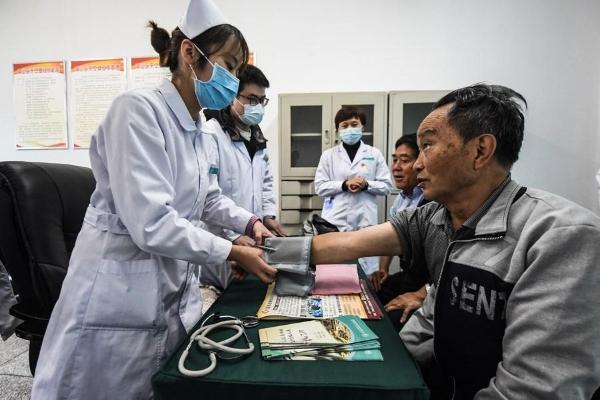China further explains the background of its health insurance reform
 0 Comment(s)
0 Comment(s) Print
Print E-mail CGTN, February 26, 2023
E-mail CGTN, February 26, 2023

Medical workers provide free medical care service to the elders at a university for senior citizens of Zhongshan District in Liupanshui, southwest China's Guizhou Province, Oct. 14, 2021. [Photo/Xinhua]
With significant changes to the economy and society, China's original health insurance system has been struggling to safeguard the health of the people, the National Health Security Administration said in a news release on Saturday.
China's health insurance system for employees was officially implemented in 1998. The current health insurance system has two parts: a national fund paid by employers that covers serious or chronic diseases, and a personal fund paid by employers and employees together for day-to-day doctor visits.
The personal fund is managed, as the name suggests, by employees themselves. The national fund is managed by the government, with part of the money going directly to employees as cash – this is where the income cut took place.
However, the system is getting out of date.
The health security administration said that during the past 20 years, the spectrum of diseases in China has undergone tremendous changes, and chronic diseases have become the main diseases.
The most effective way of treating chronic diseases is early diagnosis and treatment through outpatient services. The original system makes it hard to guarantee the general outpatient expenses through personal accounts, said the administration.
The admiration also noted that, as more services have become available at outpatient, the limited accumulation of personal funds can no longer satisfy the demands of the insured.
And the original system can't adapt to the trends of an aging population. The elderly are more likely to suffer from illnesses, and often prone to a variety of chronic diseases. Their frequency and cost of outpatient treatment are significantly higher than those of the young and middle-aged.
At present, 99% of the coordinated areas across the country have carried out general outpatient coordination, the administration said.
In 2022, a total of 108.6 billion yuan (about $15.6 billion) was cut from the medical burden of employees in general clinics. Since 2023, designated medical institutions have realized the coordinated settlement of 441 million general outpatients, with an average daily settlement of more than 7.8 million, totaling 46.24 billion yuan.
The administration said the country will continue optimizing the system, including adding more designated retail pharmacies in outpatient reimbursement, encouraging community-level medical institutions to provide more drugs, and proving better medical insurance services.






Go to Forum >>0 Comment(s)